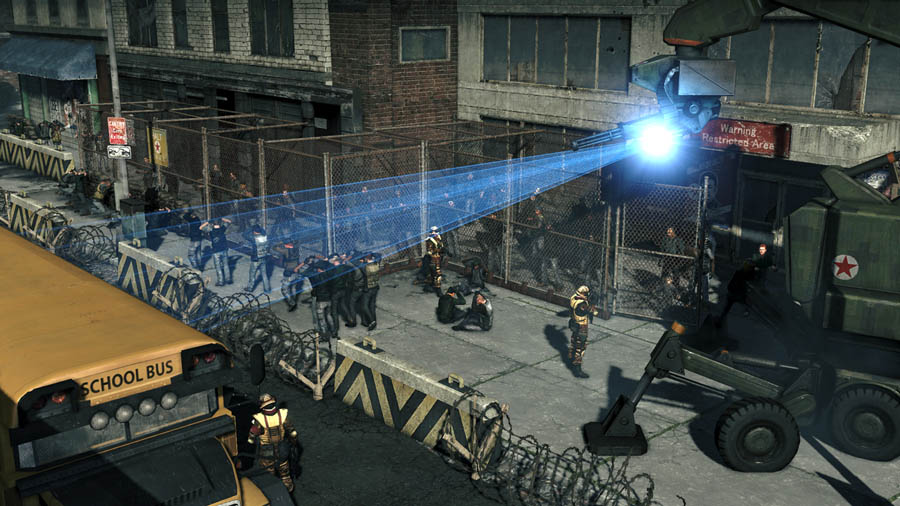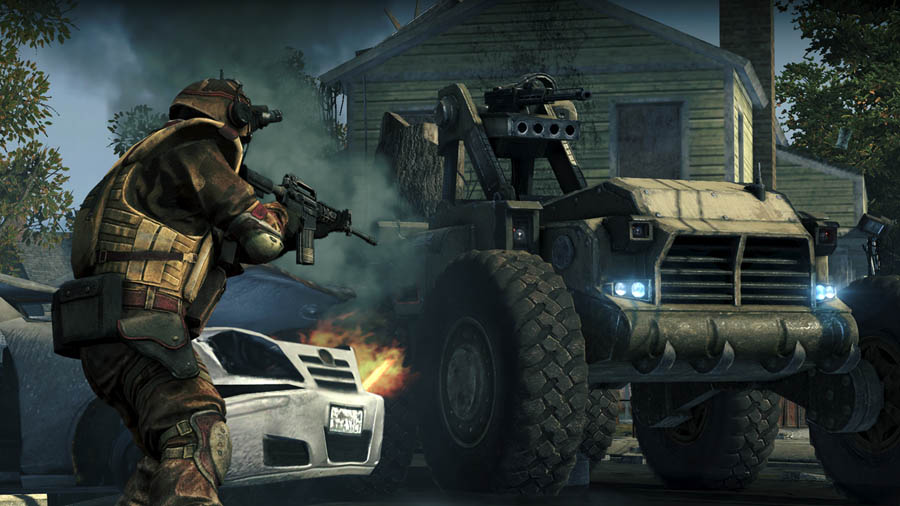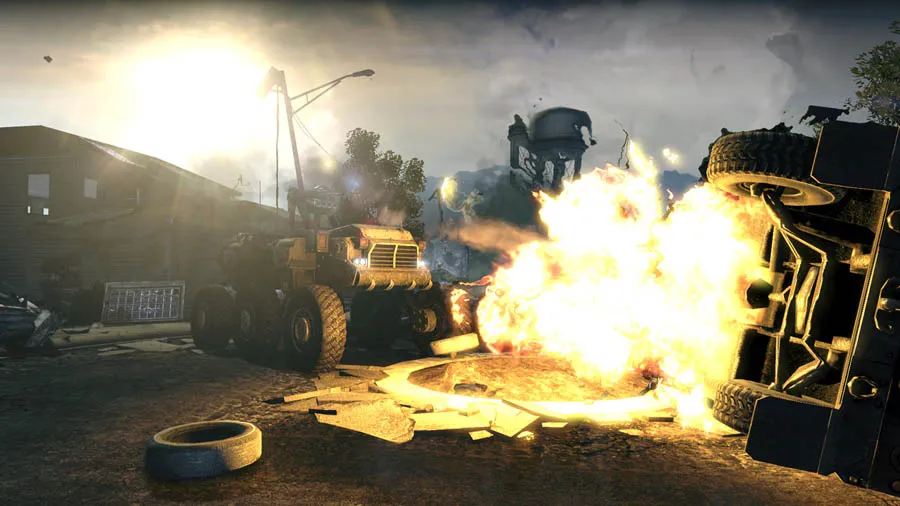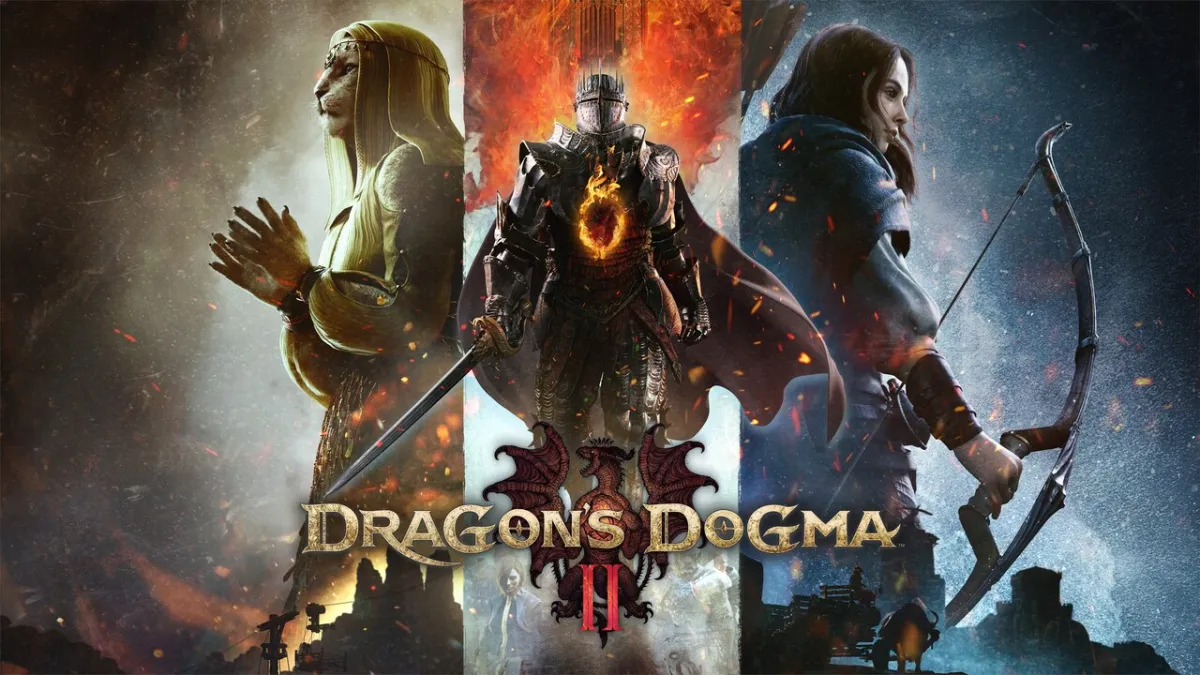Homefront is aimed squarely at the First Person Shooter fan. An alternative to the popular shooters that were released recently, this shooter is built in the mold of many that have come before it. Class based character selection in the multiplayer arena coupled with unlockable perks, weapons, and killstreaks will make this very familiar territory for the online shooter fan. The campaign, which is also follows the pattern of other linear shooters, features squad based combat spattered with cinematic sequences that attempt to further the excellent premise of the game.

What we loved about Homefront
There are quite a few things that Homefront gets right in its first offering. This super competitive space in gaming is said to only have room for a few AAA titles. Sadly, Homefront is derivative of the more successful games in the genre. It does little to really break away from the mold other than through its premise. If you can sink yourself into the world through the campaign mode, you can find a deeper appreciation for Homefront. The developer attempts to pull on the emotions that are summoned when watching a family gunned down in front of their child, mass graves in a high school stadium, or an all-out gun fight in a suburban retail outlet.
It’s not the first we’ve seen of this. Modern Warfare 2, also brought the war to the United States. But Homefront attempts to tell a much different story by basing the entire game around the premise that Korea has invaded the United States, split its armies, and is now presiding as ruler of the nation. You play the role of a resistance fighter, and your mission albeit a small part of a larger battle, is ultimately to take out anti-air weaponry that is prohibiting American Air defense planes from taking off to combat the Korean assault.
Kaos sets a decent stage for the events of Homefront. Some areas are quite recognizable, like the Golden Gate bridge. But others are more close to home for many, like the neighborhoods, schools, and shops that many in America’s suburban areas will find quite familiar. If you grew up in the 80’s you are familiar with Red Dawn. It’s the story of a communist overthrow of the American government. John Milius, who was involved with Red Dawn, was tapped for the fiction of the story. Because of this, Kaos achieves a different level of story telling in the game, than they would have been able to accomplish without the screenwriter. At least that’s what they say to him in a thank you during the credits.
Of Homefront’s best assets are its gunplay. This shooter is of the likes of the Call of Duty franchise for wide open hit boxes and tight pinpoint aiming. That being said, the guns pack a punch. You can quickly take down multiple enemies with well placed shots and this leads to a fast and frantic pace through most of the game. There are quite a few guns to be found throughout the campaign from downed enemies to ammo caches throughout the desolate occupied areas.
Because of the tight gunplay, Homefront holds its own in the online arena as well. It’s far from a perfect game, its multiplayer component, but those that enjoy the fast paced action of a Call of Duty title, will feel right at home in Homefront. It’s not a carbon copy however. Eventhough the game has many of the features found in a modern first person shooter like Killstreaks, Perks, and Unlockable Equipment it does present the content in a different manner.
Unlike Call of Duty, in Homefront your Killstreaks aren’t killstreaks at all. They are items that can be purchased throughout the multiplayer game. You’ll earn points for assists,kills, and teammate saves in your standard deathmatch games. You’ll also earn for capturing territories and other objectives accomplished in the other Team Based Objective modes. As you progress through the ranks in the multiplayer arena, you earn experience points for all of your accomplishments on the battlefield. As you progress new loadouts can be created, where things like guns,attachments, weapon camo, explosives, perks, and special weapons can be purchased. The guns, attachments, camos, and explosives are pretty straight forward. The special weapons are where Homefront deviates from the norm in quite a few ways. The slots are populated with a standard weapon for your class at the onset. And depending which you choose, can be anything from a UAV drone to Hellfire Missiles. These are the equivalent to Killstreaks and can be accessed by getting kills and then activating the special ability. There are wide range of purchasable items. There are four types of drones which can provide support or intel on the battlefield. There are airstrikes which can rain down missiles or phosphorus on the enemy. There are support items like a Flack Jacket, a Personal Radar, an Ammo Drop, or Thermal Goggles. And lastly there are Rocket Launchers which can help against the many vehicles that you will encounter.
Vehicles are purchased much in the same way that Special Items are in-game. As you accumulate points, you will be able to purchase things like a Hum-Vee, Tanks, or Attack Choppers. When you die, you will be prompted with option to purchase any of the vehicular weapons assuming that you have earned enough points throughout the match.
These gameplay elements do a couple of things. First, since you don’t need to go on an 11 kill streak to earn some of the cooler things on the battlefield there really is no incentive for camping. In fact, most of camping is done by snipers in my experience with the multiplayer. But secondly, everyone has these perks and it makes for an extremely chaotic battlefield. It’s not uncommon to have multiple helicopters, tanks, UAV’s, and other drones all duking it out at the same time, alongside the up to 32 players. And for a game to house this type of madness the maps must be big, and they are in Homefront. Homefront’s multiplayer is a game that caters to many different types of players. There are plenty of elevated rooftops for snipers, as well as close quarter buildings and areas to fight up close and personal. As far as size goes, I would say the maps fall somewhere in between. Not quite as large as Battlefield, and nowhere near as small as Call of Duty. There’s also the inclusion of some interesting game modes in the multiplayer. One being the Battle Commander mode, where a threat level is given to the most dangerous players on the battlefield. Which makes you a marked man. Meaning that there is now a point bounty on your head that grows as you kill more plays consecutively, so expect trouble when doing well in this mode. It’s an interesting twist to the standard multiplayer affair that most games offer.

What we hated about Homefront
Despite some of things that they did well, and obviously focused on. Homefront comes off as a mediocre game at best. The campaign is forgettable. Not only for its content, but for its length. Short by any standard, the five hour campaign does little to explain the fiction behind Homefront. As advertised, this is what this “franchise” is supposedly built around. It’s a game that is supposed to built around North Korea invading the United States, but aside from the graphic depiction of an occupied Colorado town at the onset of the game, it does little explaining for the rest of the brief stint of a story. It’s disappointing really. Of all the videos and explanations leading up to the game, you would think that the fiction would be elaborated on more in the game.
Your faceless and voiceless character just feels like a dog following behind his master for all of the campaign, and despite the illusion of an against all odds backdrop for the story, there is never a time where this is actually conveyed. If you are interested in the fiction of the game, you are much better off just watching the pre-release media that trickled in leading up to launch. Because as a game, it doesn’t do much by way of story telling. You would think that with millions of dollars invested in this new franchise, there would be a more concerted effort to pull players into the world of Homefront. A cast of forgettable characters and a few cheap emotional tugs didn’t achieve what the developers were obviously trying to accomplish here. Not with me anyway. Obviously, I can’t speak for everyone. There may be some who think that this is the pinnacle in video game story telling. In the end, Homefront’s campaign left me indifferent and uncaring, but more importantly disappointed in what could have been. For me I likened it to a movie that had an action packed and misleading preview that misrepresented its content.
When a game doesn’t have this story to pull you into the world. You have to rely on the other things that make up a game to keep the player interested. Things like graphics, gameplay, presentation, and overall design. None of these things really stand out either. The graphics of Homefront aren’t even close to what other developers are doing right now. The level of detail found in other games that have released this year, basically make Homefront look like an antiquated, derivative and generic copycat of better games. And while other developers in the genre are pushing limits to freshen up the space, Homefront feels like it’s deeply rooted in 2008.
Disappointed as I was with Homefront in its graphics and inability to capitalize on its premise. Certain design elements really drove home this game’s mediocrity. Whether looking to the campaign or the multiplayer, there are certain things that just can’t be overlooked. From the campaign, as I touched on briefly above, you are on a constant follow me mission. Here you are tasked with following the leader through an enemy occupied territory. This wouldn’t be so bad if it wasn’t for the horrendous AI, and horrid animations. Whether examining your squadmates or the enemy, its not uncommon to find them running in place into invisible walls. Your squadmates are always either sprinting ahead of you or lagging far behind and leaves the experience kind of disjointed. You’ll be hard pressed to find a point in the campaign when the game isn’t prompting you to follow your squad leader, even if he is well behind the pace of the action on screen. But it’s probably better that your squad mates keep their distance anyway because when they are close to you, the firefights turn into a fustercluck of your allies pushing you out of cover to get to specific spots. None of it delivers a visceral feeling. You will blast through enemy forces in a mission that has bullets whizzing by your head only to reach your destination and have your squadmates laboring to all walk to a spot, set themselves and then progress.
The campaign is littered with these poor design choices. If not for the story or design, I will remember Homefront for one of the worst vehicular sequences in recent memory. A helicopter mission which has some of worst controls I have ever experienced accompanied by the ability to bound off of vehicles or even the ground. It’s the pinnacle of unrealistic gameplay, and zaps every morsel of tension that the game could have presented.
When tasked with manning the turret of a vehicle the controller sensitivity is at the pitch that only a crack head on a two day bender could appreciate. This just so happens to also be the crescendo of the game. It’s alot of the little things like these in games that make you truly appreciate craftsmanship, and Homefront falters in a lot of these finer details. Straight forward shooting mechanics help, but when you put them together with a jerky hit and miss melee attack and a system for operating grenades that is also poor, you begin to see some major chinks in the armor of Homefront’s gameplay.
Thankfully multiplayer is more of a point and shoot affair. Where you wont find most of these poor inclusions, unless you plan to operate vehicles, grenades, or melee.
Homefront left me with a bad taste in my mouth for a number of reasons. The game is just not anything close to what I had expected it to be, and what it was advertised as. Leading up to release, the buzz words were plenty that Homefront “had soul”, and that there need be emotions attached to killing. Talk is cheap. Actually doing this is something entirely different than saying it. And unexpectedly Homefront doesn’t even seem to make an effort to accomplish this. It’s like their marketing departments and their development team exist on two completely different planes. There is little soul in Homefront, the game itself is derived almost entirely from better games in the genre. From the multiplayer system in place, to the campaign, you would expect some type of effort on their part to differentiate themselves from the crowd. Homefront’s lackluster campaign makes even the most highly criticized fps single player offerings look like the crown jewels of gaming.
I think ultimately, the campaign is so short-lived and souless that its problems are like big fish in a small pond. Easily spotted because theres not much else to examine. You could make the argument that the game’s short lived campaign is made up for by the focus on the multiplayer side of things, but with problems on that front as well, it just ends up feeling like two average experiences. The multiplayer is much better than the campaign side of things when it comes to replay and fun, but there’s actually little included in the offering to make me want to commit any more time than I already have in following my character’s progression. I play many of todays most popular shooters on a fairly regular basis: Killzone 3, Black Ops, Battlefield, among others and while mildly amusing, Homefront certainly isn’t going to be pulling me away from those anytime soon.
The Verdict
Homefront is a pretty big disappointment in my book. A story that I eagerly anticipated to wade through was never actually realized. Without that, the multiplayer also meant that much less to me as well. And while the multiplayer can certainly have it’s moments of fun, it’s not something that hasn’t been done before. While not all games need to be ground breaking or original, it helps to at least do something better than the competition. And honestly, I couldn’t find one area where Homefront outpaces its competitors. It completely drops the ball in the area that it advertised itself to be different, the story. As a result, it fails to follow through on delivering the emotion and soul that it was supposedly built around.







